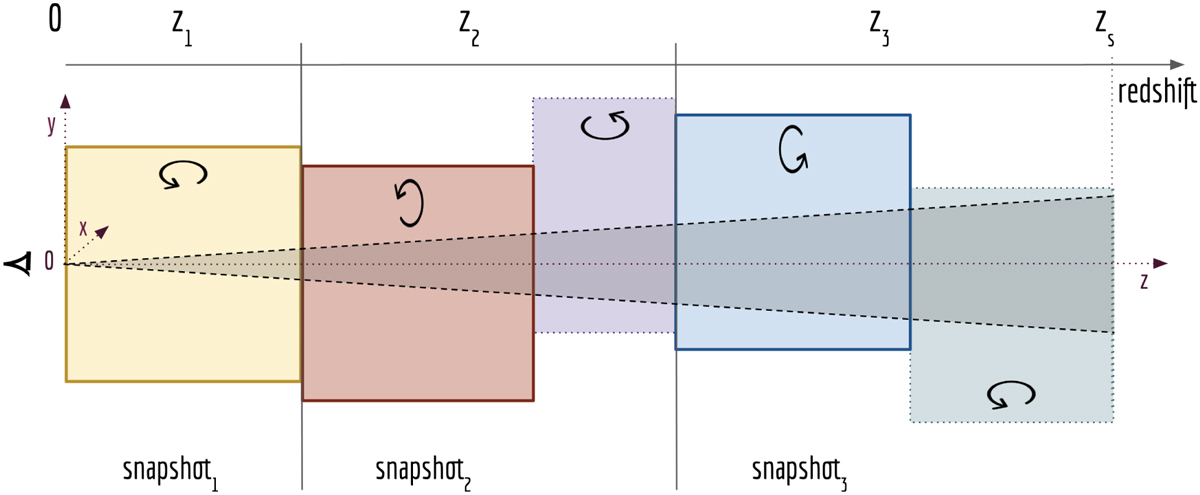Fig. 1

Download original image
Illustration of the construction of the light cone. The cosmological volume between z=0 and zs is divided in bins of redshift, delimited by vertical black lines; the observer is located at the position O, on the left of the figure, centered with respect to the first simulation box at z = 0. The full light cone is realized by firstly stacking the comoving volume of the simulation at the proper redshift, represented by snapshots 1, 2, 3 located at redshifts z1, z2, z3 (boxes with thick contours), with rotated coordinates and shifted centers to avoid repetition of the structures along the z-axis. Then, the possible gaps between two contiguous snapshots (occurring because the distance between two subsequent snapshots is larger than the size of the simulation box along the z-axis) are filled up with replicas of existing snapshots (boxes with dashed contours), with volumes tailored to fill the gaps, and with rotated coordinates and shifted centers. The darker area is the light cone, growing with the comoving distance utmost to the transverse comoving size of the simulation box.
Current usage metrics show cumulative count of Article Views (full-text article views including HTML views, PDF and ePub downloads, according to the available data) and Abstracts Views on Vision4Press platform.
Data correspond to usage on the plateform after 2015. The current usage metrics is available 48-96 hours after online publication and is updated daily on week days.
Initial download of the metrics may take a while.


